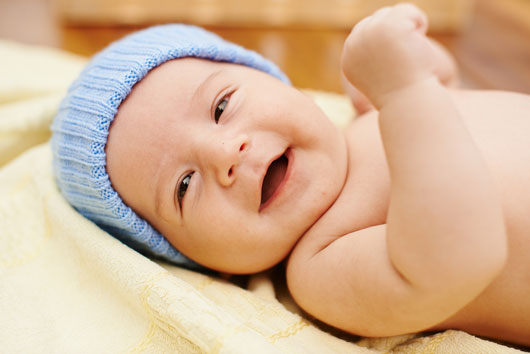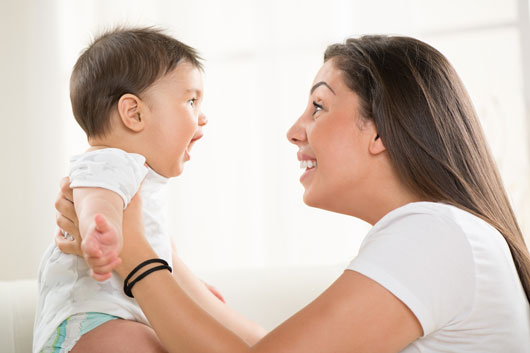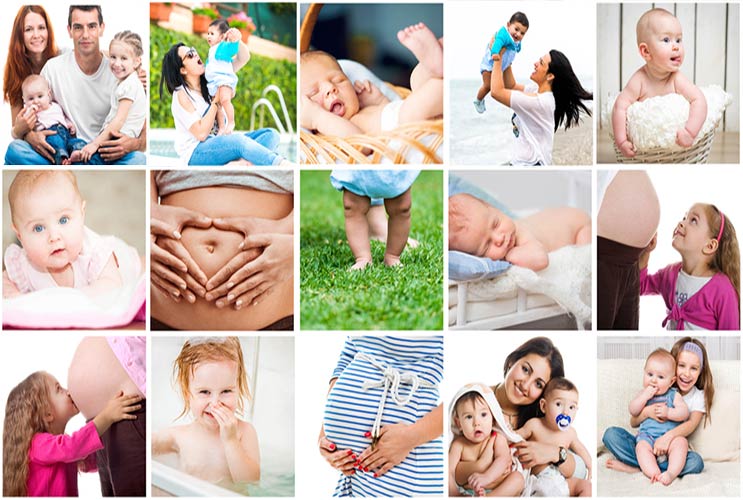
As a parent, sometimes it can seem like you aren’t just raising children, you’re also a professional photographer (…and yes, we know you’re also a chef, a housekeeper, an alarm clock, a teacher and a chauffeur.) You spend a LOT of time taking pictures of your kids, and you can’t help it. Every second is an opportunity to capture that moment in time and share their cuteness with loved ones near and far. And while candid shots are great in their own way, sometimes you just want a nice simple smile. Seems like no big deal, right? Wrong. Getting your kids to smile without making a weird, squinty, offensively silly smile is actually really challenging.
According to Laura Brophy, a child and family photographer and mother of three, saying “cheese” isn’t the answer. The commands “to smile and say ‘Cheese’—all of that tends to undermine your ability to get really authentic snapshots…we teach our children to make very strange smiles that don’t really capture who they are.” If you’re guilty of overusing the “cheese” command, and it’s not working, then we’re here to help. Here are some simple tips to help you get your kids to smile for your next shot.
Read Related: Say Cheese: 10 Non-Obvious Reasons Why You Should Smile More

Catch Them at the Right Time of Day
If your kids are nightmares during the witching hour, typically 5-6pm, right before dinner, then don’t try to take photos when they are likely to have a breakdown. You’re just setting yourself up to fail. Choose a time of day when they are well rested, well-fed and generally happy and energetic. Like any adult, you have to be in a good mood to look like you’re in a good mood on camera.
Bring Props
Don’t underestimate the power of props. Professional photographer Kristen Duke of Kristen Duke Photography has a plan. “First, I pull out a little yellow hair scrunchy that has been converted to a duck. It wraps around my lens and I tell the young kids to look right at the duck and quack. I try to wait until I am desperate when I pull out a ball or a rattle to get their attention.” When done right props can make little kids feel comfortable, like they’re playing with favorite toys, rather than being stared at by unfamiliar camera lens. Just be careful, you want to distract kids from the pressure to pose, but not distract them to the point where they only want to play with your props and refuse to sit still. There’s a fine line, so play the prop card carefully.
Play Their Favorite Song
Models and celebrities play music during photo shoots to loosen up, and the same rule applies to your kids. Blast a favorite song and let them dance around and sing. Or you can sing a known children’s song to them and let them participate so that they feel comfortable and happy as you begin taking pictures.

Be Silly
The most genuine smiles aren’t given on command just because someone tells you to feel happiness and joy. The best smiles—the ones that make others smile when they look at them—happen when you are legitimately overjoyed, comfortable and happy. To get your kids to give you cute smiles that will photograph well, make them laugh. When kids laugh their faces relax and everything looks natural. And the best way to make kids laugh is to be silly. Make a funny face, may funny noises, jump around, pretend to bump your head, do a ridiculous dance move…whatever it takes to get kids giggling will get you a cute, happy, smiley picture.
Talk About Their Interests
With older kids you can’t rely on slapstick humor or silly props to get them to smile. You need to dig a little deeper to get them comfortable enough to give you a genuine smile. Try connecting with them by chatting about their interests. If you know they love sports, talk about last night’s game or bring a soccer ball to kick around while they loosen up. Ask about their friends or boyfriend/girlfriend…they’ll light up just because you are showing interest in their passions.
Take a LOT of Pictures
You’re not going to get a perfect smile on the first take. So take a LOT of photos. Photographer (and mom) Heather Forbes, says that “if you want a couple of fabulous pictures of your child, plan on taking 75 photos; I’m often editing or deleting 50 percent of my shots.” Be patient, be prepared to play around and experiment with several different settings, props, techniques and shots, and equally important, know when to quit. You do not want a toddler having a major tantrum in front of the camera—though those pictures can be entertaining in a different way. Know when to say “cut” so that your kids will end on a positive note, and will be more likely to smile the next time around.











